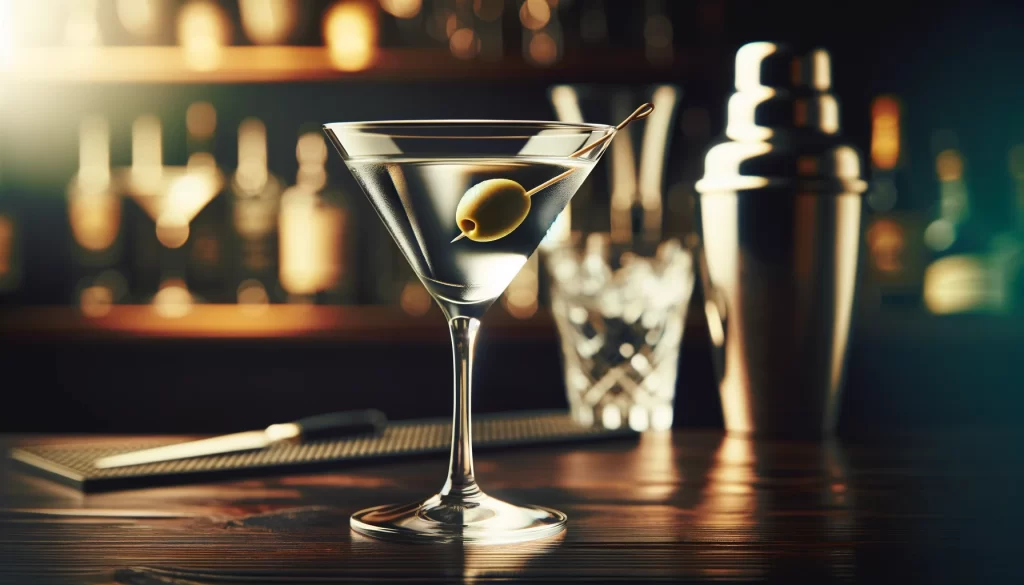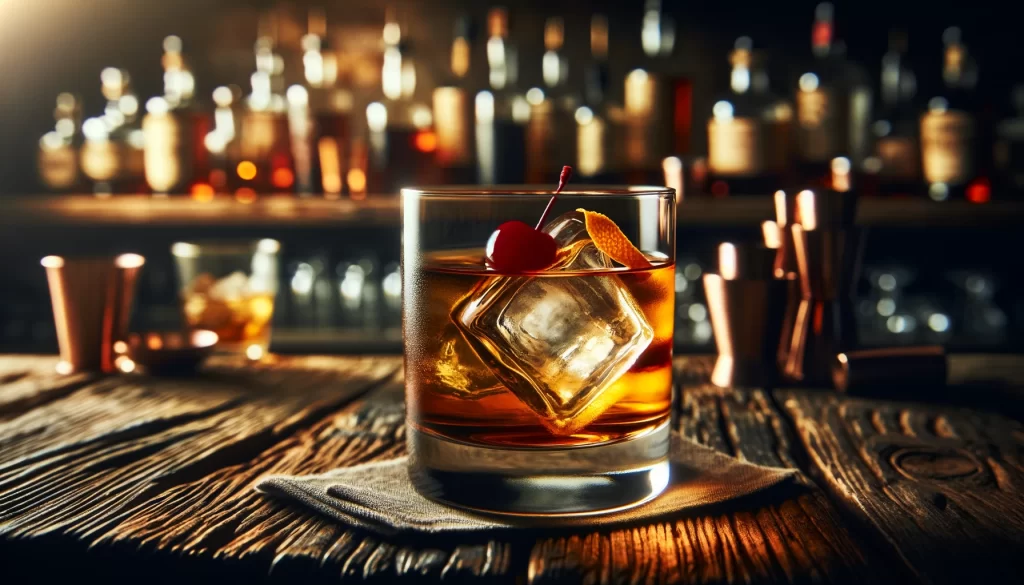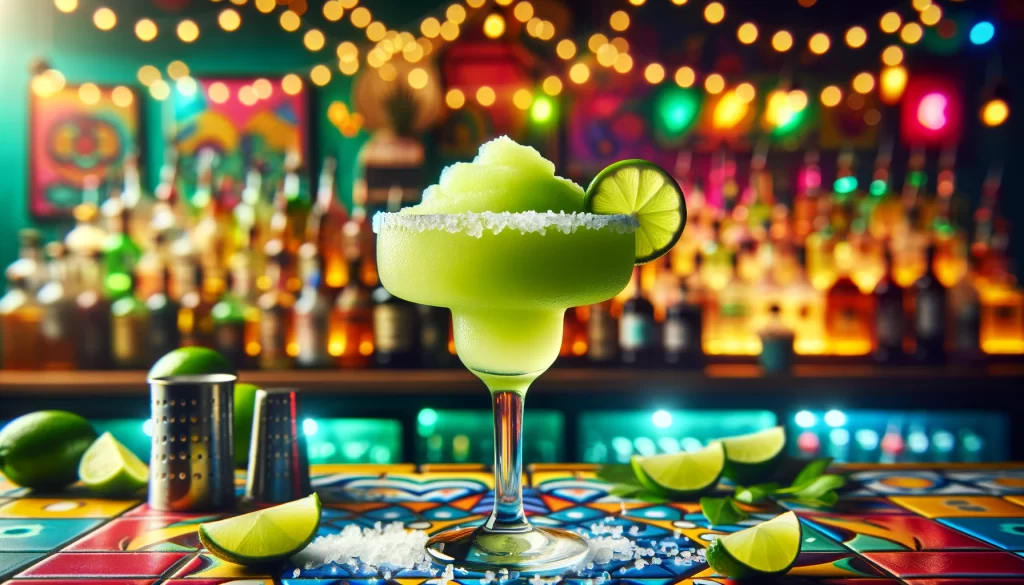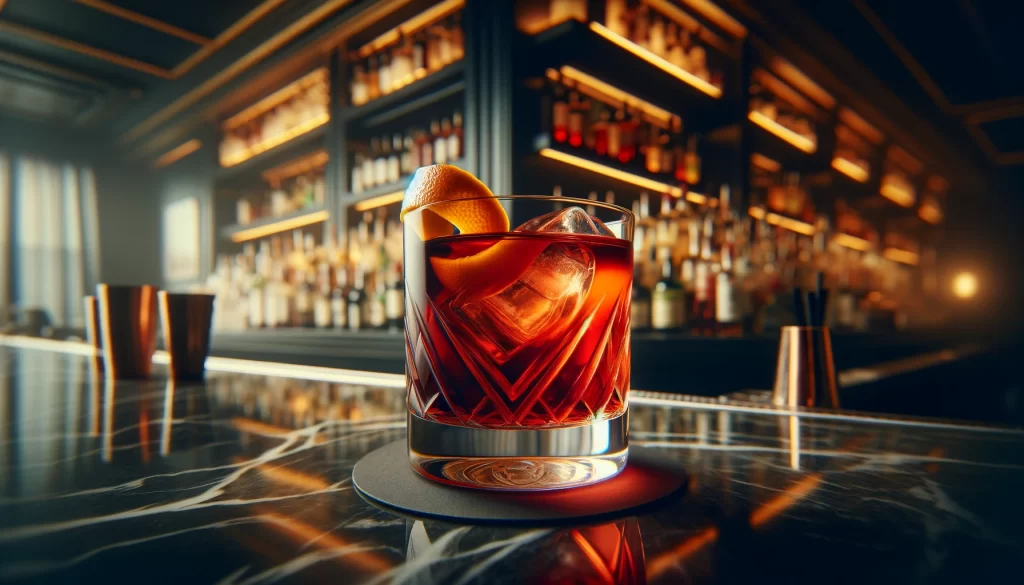From the smoky dens of pre-Prohibition to the high-energy bars of today’s bustling cities, cocktails have chronicled a rich tapestry of history and innovation. Whether you’re a budding mixologist or simply a lover of good drinks, knowing these 20 cocktails will deepen your appreciation for the art of cocktail making and enhance your enjoyment of social gatherings.
1. Martini

- Origin: Believed to have originated in the late 19th century in California, the Martini is often associated with American sophistication.
- Ingredients: Gin, dry vermouth, olive or lemon twist for garnish.
- Nuance: The ratio of gin to vermouth can vary according to taste, from the classic 2:1 to the dry martini with a splash of vermouth. Shaken or stirred, it’s served in a chilled martini glass.
2. Old Fashioned

- Origin: This cocktail dates back to the early 1800s, making it one of the oldest known cocktails, originating from Louisville, Kentucky.
- Ingredients: Bourbon or rye whiskey, sugar cube, Angostura bitters, water, orange peel, and maraschino cherry for garnish.
- Nuance: The key is in the muddling of the sugar and bitters, then adding ice and whiskey. It’s a testament to the beauty of simplicity.
3. Margarita

- Origin: The Margarita’s origins are debated, but it likely came about in the 1930s or 1940s in Mexico.
- Ingredients: Tequila, lime juice, Cointreau or triple sec, salt for the rim.
- Nuance: Served shaken with ice, blended with ice, or straight up in a glass with a salted rim. It’s the quintessential Mexican cocktail.
4. Negroni

- Origin: Invented in Florence, Italy, in 1919, it was said to be named after Count Camillo Negroni.
- Ingredients: Gin, vermouth rosso, Campari, orange peel for garnish.
- Nuance: The perfect aperitif, its bittersweet taste is refreshing and complex, served on the rocks in an old-fashioned glass.
5. Manhattan
- Origin: Created in the late 19th century in New York City, specifically at the Manhattan Club.
- Ingredients: Rye whiskey, sweet vermouth, Angostura bitters, maraschino cherry for garnish.
- Nuance: Stirred over ice, strained into a chilled glass, it’s a sophisticated cocktail that’s smooth with a balanced sweetness.
6. Mojito
- Origin: With roots in Havana, Cuba, the Mojito reflects the island’s vibrant culture and tropical climate.
- Ingredients: White rum, sugar (traditionally sugar cane juice), lime juice, soda water, and mint.
- Nuance: Muddling the mint with sugar and lime juice is crucial for releasing the mint flavors. It’s refreshing and light.
7. Cosmopolitan
- Origin: The modern Cosmopolitan is credited to bartender Toby Cecchini in New York City in 1987.
- Ingredients: Vodka, triple sec, cranberry juice, and lime juice.
- Nuance: Served in a large cocktail glass, the “Cosmo” is known for its pink hue and was popularized in the 1990s by the television show “Sex and the City.”
8. Whiskey Sour
- Origin: The Whiskey Sour has been around since the 1870s, part of the wider family of sour cocktails.
- Ingredients: Whiskey, lemon juice, sugar, and optionally, a dash of egg white for frothiness.
- Nuance: The egg white isn’t traditional but adds a smooth texture and frothy top when shaken vigorously. It’s served either in a coupe glass or on the rocks.
9. Pina Colada
- Origin: Invented in Puerto Rico in the 1950s, it’s been the country’s national drink since 1978.
- Ingredients: Rum, coconut cream or coconut milk, and pineapple juice.
- Nuance: Blended with ice until smooth and served in a tall glass, garnished with a pineapple slice and maraschino cherry. It’s the essence of tropical indulgence.
10. Daiquiri
- Origin: Named after a small town in Cuba, the Daiquiri was said to be a favorite of Ernest Hemingway and JFK.
- Ingredients: Rum, citrus juice (usually lime), and sugar.
- Nuance: A simple cocktail that’s shaken and served without ice. It’s crisp and refreshing, with a balance between the rum’s sweetness and the lime’s acidity.
11. Sazerac
- Origin: Considered by some as America’s first cocktail, originating in New Orleans in the mid-1800s.
- Ingredients: Rye whiskey, absinthe, a sugar cube, and Peychaud’s bitters.
- Nuance: The absinthe rinse is what sets this cocktail apart, giving it a complex layer of flavor. It’s served neat in a chilled old-fashioned glass.
12. French 75
- Origin: Created during World War I, its name comes from the French 75mm field gun, known for its power.
- Ingredients: Gin, champagne, lemon juice, and sugar.
- Nuance: A celebratory drink that’s both refreshing and potent, served in a flute to highlight its sparkling component.
13. Bloody Mary
- Origin: The origin is disputed, but it became popular in the 1930s in both Paris and New York.
- Ingredients: Vodka, tomato juice, lemon juice, Worcestershire sauce, Tabasco, celery salt, pepper, and garnishes like celery stalks and olives.
- Nuance: Known for its complex flavors and as a cure for hangovers, it’s a highly customizable cocktail often served in a tall glass.
14. Gin Fizz
- Origin: Part of the fizz family, which gained popularity in the US in the late 19th and early 20th centuries.
- Ingredients: Gin, lemon juice, sugar, and carbonated water.
- Nuance: Light and refreshing, with a frothy top from shaking vigorously with ice, then straining into a glass and topping with soda.
15. Sidecar
- Origin: This cocktail dates back to the end of World War I and is associated with Parisian nightlife.
- Ingredients: Cognac, orange liqueur (such as Cointreau), and lemon juice.
- Nuance: Served in a sugar-rimmed cocktail glass, it’s a perfect balance of sweet and sour, showcasing the depth of cognac.
16. Tom Collins
- Origin: First recorded in 1876 by Jerry Thomas, “the father of American mixology,” it’s named after a 19th-century practical joke.
- Ingredients: Gin, lemon juice, sugar, and carbonated water.
- Nuance: Served in a Collins glass over ice with a lemon slice and maraschino cherry, it’s refreshing and easy to drink.
17. Mint Julep
- Origin: A Southern classic, particularly associated with the Kentucky Derby since the early 20th century.
- Ingredients: Bourbon, fresh mint, sugar, and water.
- Nuance: Traditionally served in a silver julep cup, the key is to gently muddle the mint to release the oils without shredding the leaves.
18. Caipirinha
- Origin: Brazil’s national cocktail, made with cachaça, a spirit derived from sugarcane juice.
- Ingredients: Cachaça, sugar, and lime.
- Nuance: The lime is muddled with sugar before adding the cachaça and ice, creating a potent and refreshing drink.
19. Espresso Martini
- Origin: Created in the 1980s by London bartender Dick Bradsell, it’s a modern classic.
- Ingredients: Vodka, espresso, coffee liqueur, and simple syrup.
- Nuance: The fresh espresso is key, creating a frothy top and a deep, rich flavor, served in a martini glass.
20. Moscow Mule
- Origin: Invented in the 1940s in the United States to boost the sale of vodka and ginger beer.
- Ingredients: Vodka, ginger beer, and lime juice.
- Nuance: Served in a copper mug to enhance its cold temperature, it’s known for its spicy ginger flavor and effervescence.
Exploring these 20 cocktails reveals the rich diversity of mixology, where each drink offers a unique glimpse into different cultures, histories, and flavor profiles. Whether you’re a seasoned cocktail aficionado or new to the world of spirits, mastering these classics can turn any gathering into a memorable experience.